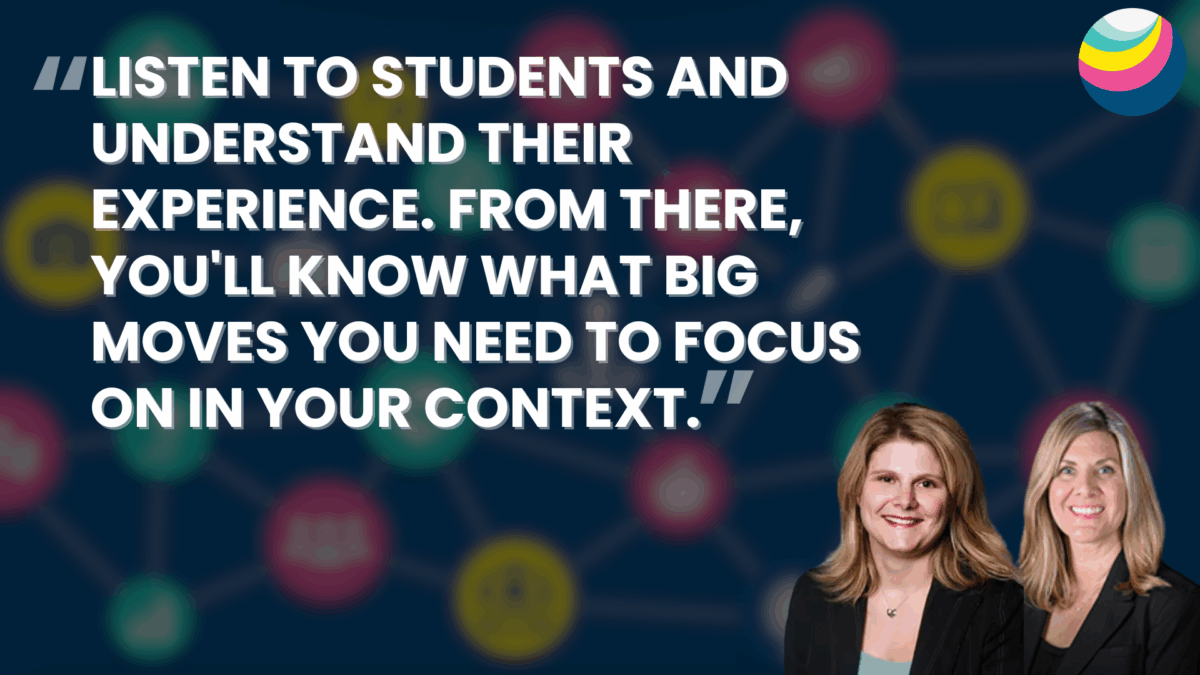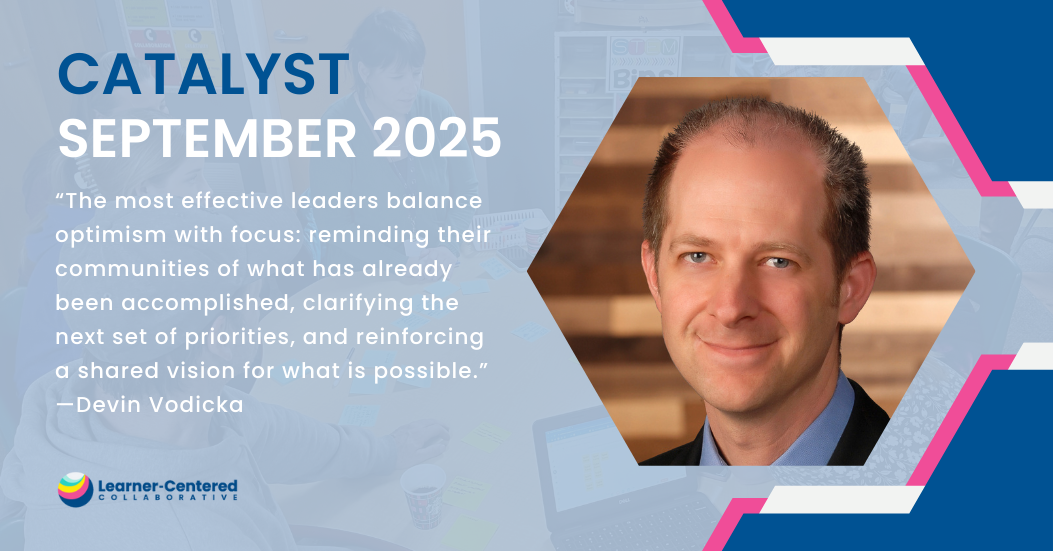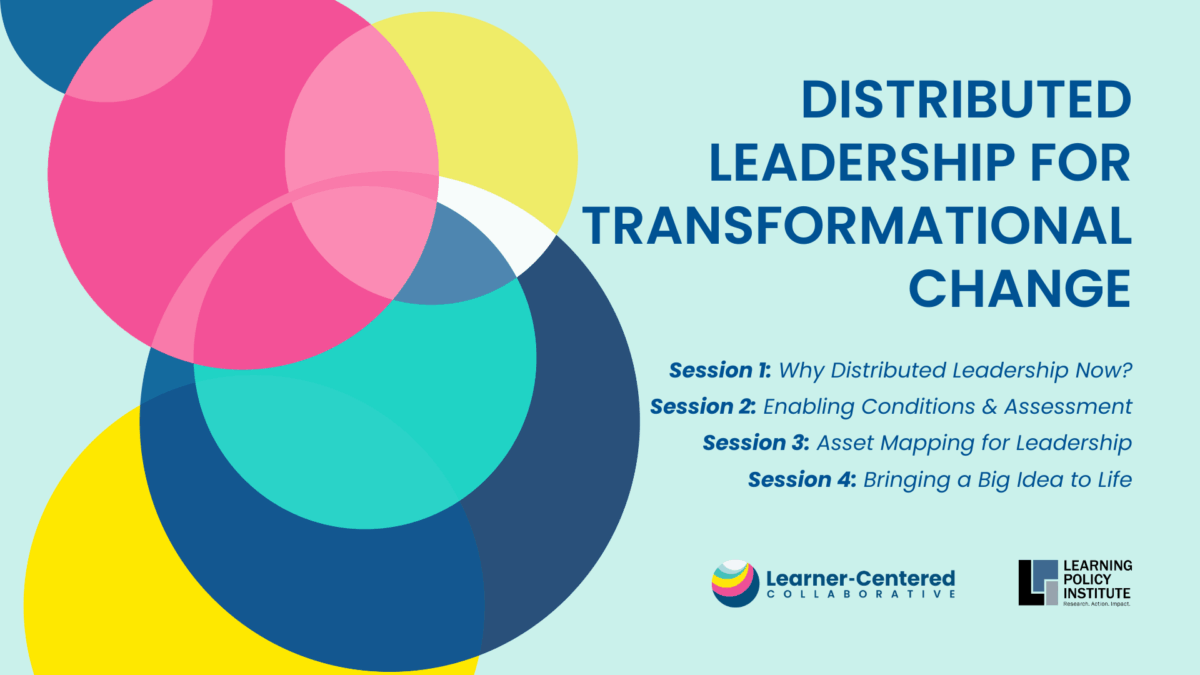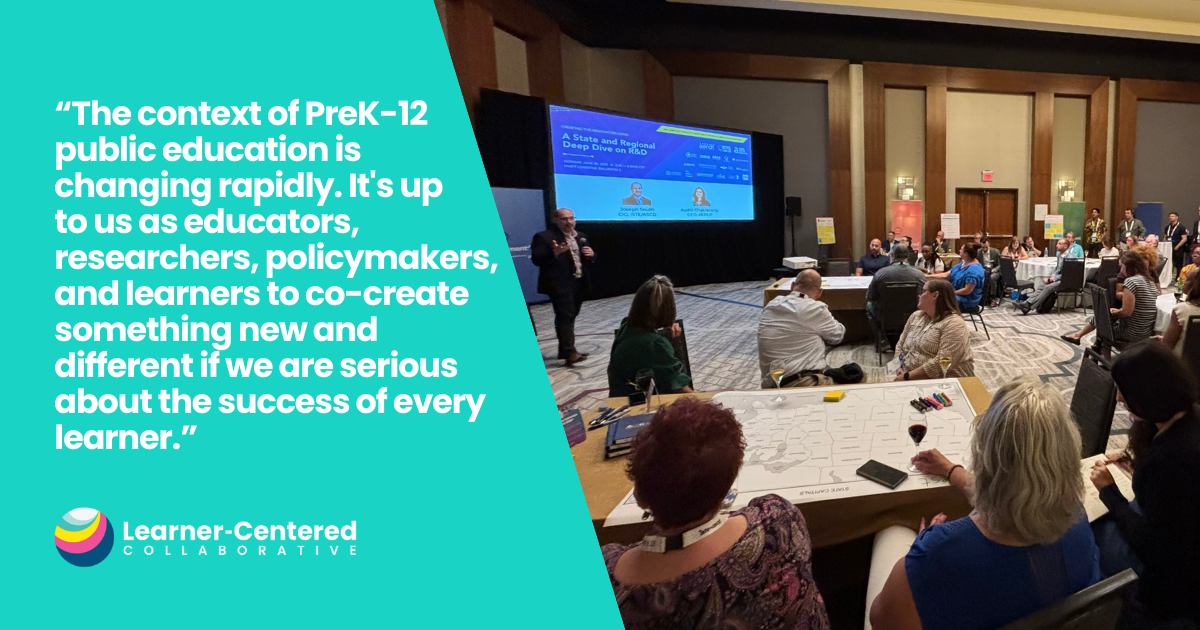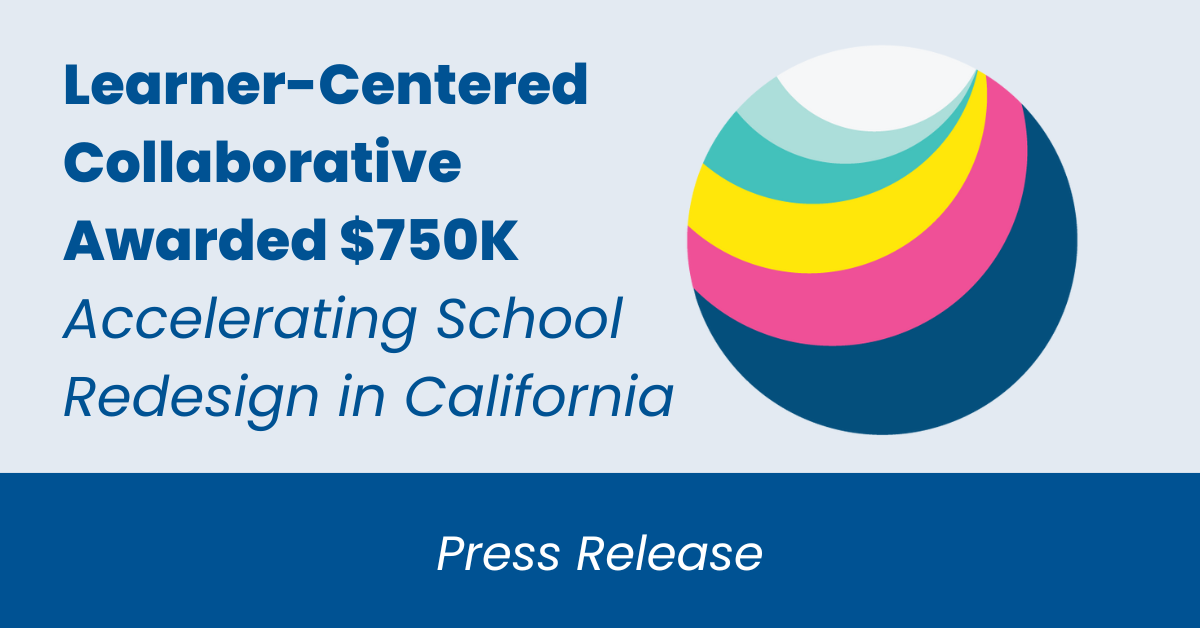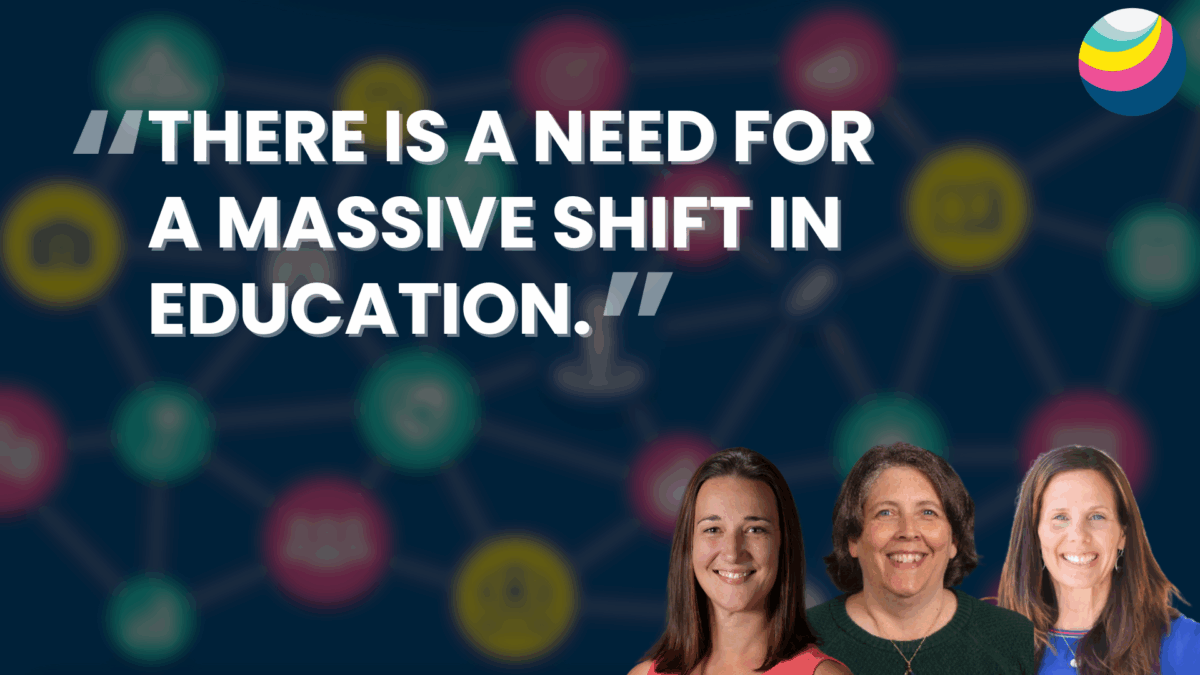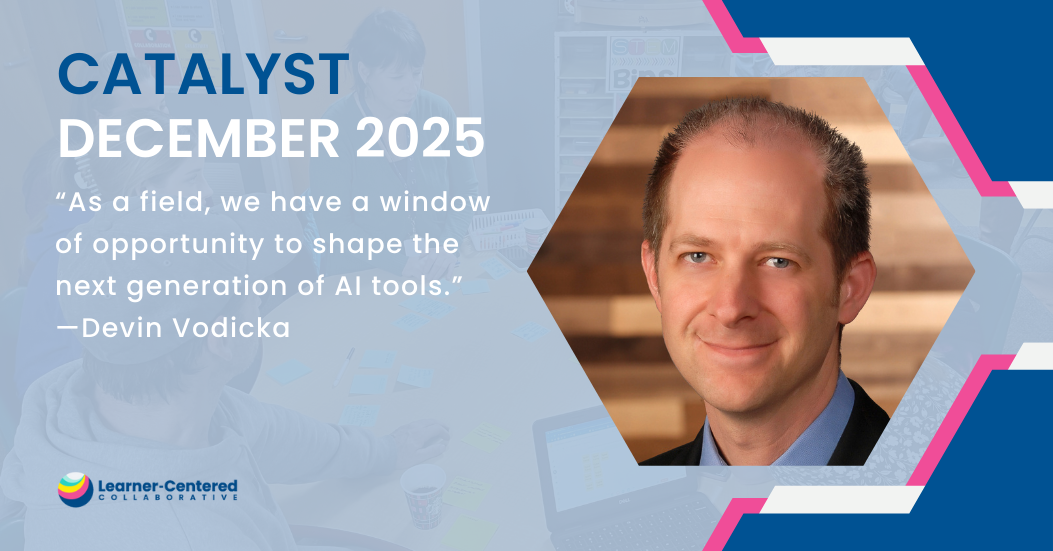Purpose, Participation, and Feedback: What it Takes to be a Learner-Centered Leader

Too often, leadership is viewed as a position rather than a practice—something tied to a title rather than a way of engaging with others to drive meaningful change. In today’s rapidly shifting educational landscape, that perspective is proving insufficient. With rising rates of superintendent and principal turnover, teacher burnout, and declining enrollment, it’s clear that schools need leadership models that are collaborative, resilient, and built to last.
Distributed leadership—where leadership is shared across networks of educators, students, and families—is not just a strategy. It’s a necessity. Sustainable change is not about the vision or charisma of a single individual; it’s about how leadership is cultivated and expanded throughout a community. When leadership is distributed, ownership grows, school culture strengthens, and transformation efforts continue, even when individuals transition out.
Why Leadership Must Be Distributed
History has shown that networks, not individuals, drive enduring change:
- The Civil Rights Movement – While Martin Luther King Jr. is often seen as the face of the movement, leadership was distributed across a vast network, including (but not limited to) John Lewis (Chairman of the Student Nonviolent Coordinating Committee), Ruby Bridges (six-year-old integrationist in New Orleans), Fannie Lou Hamer (Co-Founder and Vice Chair of the Mississippi Freedom Democratic Party), and countless local organizers.
- Open-Source Technology Development – The success of platforms like Wikipedia and the Linux operating system exemplifies how decentralized, volunteer-driven efforts can lead to world-changing innovations without a singular leader dictating progress.
- Disaster Response and Mutual Aid Networks – During crises like Hurricane Katrina or the COVID-19 pandemic, grassroots-led mutual aid efforts demonstrated how communities can effectively organize and provide relief when leadership is distributed among those closest to the problem.
If any of the examples above relied on a “hub-and-spoke” leadership model where all decision-making flows through a single leader, they would never have grown into national and global movements.
These examples tie directly to learning environments. Schools that sustain positive change over time cultivate distributed leadership networks. Research from the Northwestern University Distributed Leadership Study highlights two key aspects of distributed leadership: “principal plus” and “practice.” The “principal plus” aspect acknowledges that effective school leadership extends beyond those with formal titles, while the “practice” aspect emphasizes that leadership is a product of interactions between school leaders, teachers, and their environment.
Further studies demonstrate distributed leadership directly impacts professional development and teacher retention. Research by Spillane, Halverson, and Diamond (2004) found schools with distributed leadership structures reported higher levels of teacher collaboration and professional learning participation.
Additionally, Leithwood, Mascall, and Strauss (2009) revealed that distributed leadership is associated with increased teacher motivation, trust, and organizational commitment. These findings suggest leadership models that prioritize shared responsibility contribute to long-term school improvement and sustainability.
Read More: Distributed Leadership in Schools: Students as Ambassadors
The Impact of Distributed Leadership
I have witnessed the power of distributed leadership firsthand. When I began my superintendency at Vista Unified, I had to hire 24 new principals in my first year, teacher retention was at 80%, and the district had been experiencing significant enrollment decline. By shifting from a top-down model to a networked approach, the district saw:
- Principal turnover declined significantly.
- Teacher retention rose to 98%.
- Enrollment recovery driven by improved reputation and staff advocacy out in the community.
Fast forward to today, and one of Learner-Centered Collaborative’s partners, National School District, is showcasing a great example of distributed leadership through student leadership initiatives. The district’s Superintendent Student Roundtable empowers sixth-grade students to take part in decision-making, engage with civic issues, and lead school-wide initiatives. These examples further strengthen the research and illustrate a core truth: When leadership is distributed, schools become more stable, innovative, and resilient.
How Schools Can Build Distributed Leadership
Leadership paradigms have evolved significantly over time. When I pursued my doctoral studies in organizational leadership, I learned about various models that shaped leadership theory:
- Great Man Theory – Leadership was once believed to be an inherent trait, often linked to hierarchy and control.
- Path-Goal Theory – Leaders are seen as people who remove barriers to help others reach their goals.
- Servant Leadership – Leaders serve their teams, prioritizing the needs of others.
- Transformational Leadership – Leaders inspire and elevate those around them through shared vision and influence.
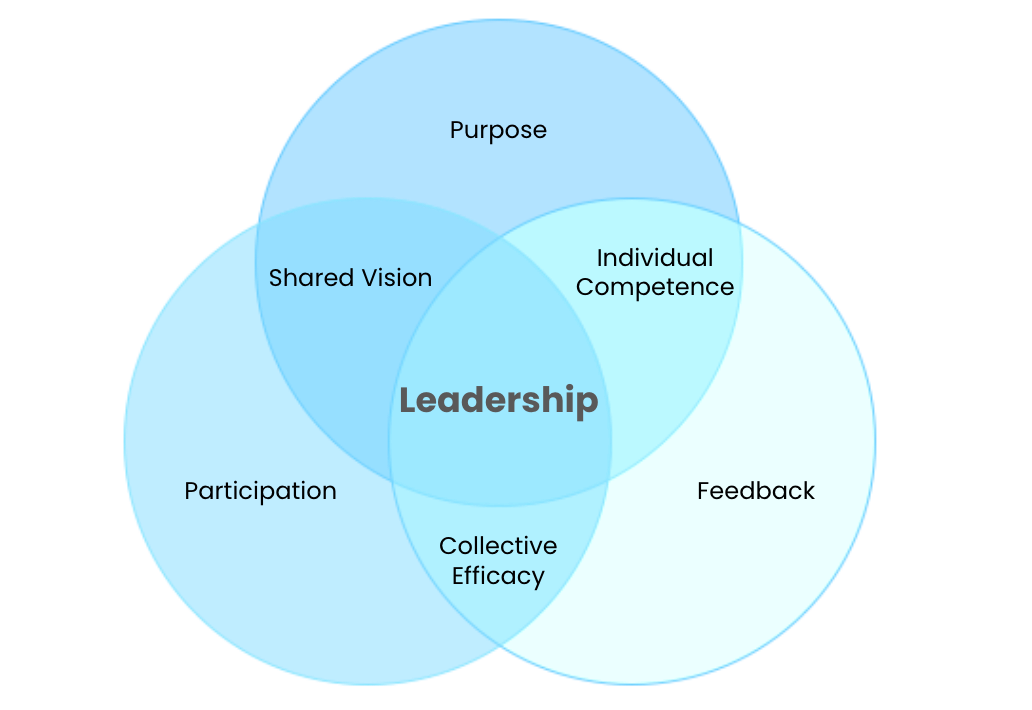
While some of these models are clearly outdated, there are principles from others and personal experiences along the way that have shaped my view over time. In my book, Learner-Centered Leadership, I highlight: “Based on numerous influences over an extended period of time, the best way I can frame learner-centered leadership is to build on some of the living systems models from Margaret Wheatley and Myron Kellner-Rogers and to say that it is the intersection of Purpose, Participation, and Feedback.”
1. Purpose
- A clear and compelling vision for the future creates coherence and attracts aligned leadership at all levels. For example, Vista Unified School District has maintained and evolved its Framework for the Future for over a decade—not because of one leader, but because there was shared ownership when it was originally developed.
2. Participation
- John Kotter’s Dual Operating System model offers a valuable lens for understanding distributed leadership. Schools need a formal hierarchy for stability and an informal network for innovation.
- Guiding Coalitions and Design Teams—diverse groups of educators, students, and community members who volunteer their time and energy—can drive sustained transformation, ensuring leadership is not confined to titles but is instead embedded in the way schools operate.
3. Feedback
- Sustaining a distributed leadership model requires co-creation and collaboration at every level of the system. This enables consistent feedback, which acts as fuel to the movement to ensure all learners know who they are, thrive in community, and actively engage in the world as their best selves. Importantly, feedback on the achievement of goals informs the journey and clarifies progress in the direction of the vision for the future.
Leadership is not about holding authority. It’s about how we engage with others to drive meaningful change. When leadership is framed this way, it becomes clear that it must be distributed.
Want to learn more about learner-centered leadership practices? Check out our course: Learner-Centered Leadership for Meaningful Change.
